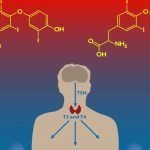The AANMC: Crossing to the Next Decade
David Schleich, PhD
Since 2001 the AANMC has been very busy in the academic corner of naturopathic medicine, both in Canada and in the United States. In the last decade much has been accomplished by many diligent AANMC members from our various colleges and programs. One of the most powerful outcomes has been the development and deployment of abundant information, on a wide platform, about our schools and programs. Equally critical have been the tireless coordinating efforts to assemble strong pools of students who want to become naturopathic physicians.
With year number ten almost completed, what should the AANMC aspire to in the next ten years? The terrain is different ten years later; more promise, more danger; more opportunity, more competition. Should the AANMC be the conduit for assessment instruments such as a naturopathic version of the MCAT? Can the AANMC build capacity and expertise to mount a sustained residency lobby and a coordinated application and distribution service?
These questions are not entirely rhetorical since the formation of naturopathic medicine as a distinct, heterodox medical system is imperative in a landscape of health care where some believe that the cherry picking of modalities is already happening. The Association of Accredited Naturopathic Medical Colleges can be a powerful catalyst and incubator for a number of priorities, which are coming into clearer definition by the day.
Recent conversations have included a medley of tasks and purposes, which could be a normal part of the mandate of the AANMC in its second decade. Some recent examples include:
- Raising awareness among other colleges and universities of naturopathic medical education as a higher education discipline.
- Raising awareness in that same arena of naturopathic medical research as a priority not only of the schools and programs, but also of the profession.
- Naturopathic college and program governance training, mentorship, and coherence.
- Ramped up student recruitment, including a large number of articulated programs.
- Teacher training certification and the development of a naturopathic medical academic career path within our colleges and programs.
- Continuous curriculum development, including a rethinking of methodology and measurement and evaluation.
- Advocacy in the higher education landscape in support of enhanced articulation agreements, trainer of choice opportunities and recognition of credentials, credit transfer and content ownership.
- Development of a national residency education initiative.
- Creation of an articulation template, complete with standards and processes.
- Generation of a system-wide academic press dedicated to natural medicine.
There are a number of perspectives about what a conversation among AANMC members would entail with respect to the present and future mission of the AANMC, chief among them financing, governance, differentiated accountability, and the role of faculty.
In any case, whatever the features of such a dialogue, there can be little doubt that the AANMC needs more resources, tools, and a broader mandate if dialogue can translate into action and that mandate inevitably reshapes. The current financial contribution levels from naturopathic colleges and programs are inadequate, for example, to support a full-time secretariat. Karen Howard has worked tirelessly since the beginning, contributing much energy to miraculously co-piloting the AANMC and the AANP. Whether it has been a discussion about whether the AANMC should champion an MCAT equivalent (the NMCAT) or how to incubate and support naturopathic-specific research, the agenda is big and it is unrelenting. Diverting revenue from the colleges and programs away from the AANP to the AANMC would bruise the already strained cash flow to our national association. The inevitable impact of increasing AANMC dues would be to tax tuition revenues even more, at a time when the debt burden for our graduates is severe in many cases.
A strategy to refinance the AANMC would also have to be accompanied by a closer look at governance. Currently, the nature of naturopathic medical education governance varies among the seven CNME-accredited programs. Ranging from stand-alone colleges to programs within small, regional, comprehensive universities, as well as single or two-program colleges. The ND program at NUHS, because of where that program is located within the governance structure of that university, will have a different governance voice than it has at Southwest, for example. The AANMC may wish to include in its future a focus on how to generate coherence of policy and mission among these differentiated governance inputs. A council of trustees might be a way to achieve some coherence, nurtured by the AANMC in the form of annual meetings of board members or advisory committee members addressing academic concerns, or finance function matters, or plant and property matters.
Related to governance is structural accountability. For example, there are various manifestations within the naturopathic community of a council of deans; however, a dean in a naturopathic college has a different mandate, in some ways, than a dean in a small, comprehensive university where his or her program is one among many. The most likely scenario, thinking ahead, will be that universities which begin naturopathic programs (in the fashion, say, with which the University of Michigan began its Doctor of Osteopathy program back in the early 1960s or NUHS began its program in the early 2000s) will likely engage chairs or associate deans, whose institutional mandates are focused more on their programs than on the broader institutional operations. Certainly the dean or chair of a future program in such a university will differ from what a dean in a stand-alone naturopathic college once did.
A further area of interest in future-scenario building will be the urgent need for the creation of a medical academic career path for NDs who choose to be primarily teachers for their career, rather than to be private practice clinicians. Currently, there is no tenure and arrangements for fully funded sabbaticals and study leaves are very difficult. Attention to establishing a formal faculty career path could manifest in the form of a council of teaching faculties, where the practical and developmental needs of classroom and clinical teachers can be heard, system wide. Such a council could drill down into professional development needs including the creation of a unique designation such as “natural medicine educator” (NME), complementing a network of colleagues paying attention to curriculum design, measurement and evaluation, teaching skills for special needs students, or the impact of information technology on classroom methodology.
Whatever the project, whether it be a national job fair, curriculum exchange, liaison with other health care educators, the Naturopathic Foundations Project, or a “residency lobby” for public money, the AANMC has to be a key incubator and catalyst for professional formation. Our future as higher education institutions lies within the highly likely scenario of single program organizations witnessing a new era of programs taking shape under the banner of “natural health sciences” in multi-program institutions. The competition to deliver such programs will come from the larger, university-based “integrated medicine” and CAM venues as these groups continue their unrelenting and not even strategic assimilation of our modalities, and eventually one of them launches a naturopathic program. I say “not even strategic” because they appear to be not conscious of how their cherry picking violates what we have struggled for decades to sustain, and they have only lately come to notice.
The modern research universities are poised to assimilate, as they have done with every major profession in the last one hundred years, whatever content they decide is important to their mission. The prevailing epistemology of the universities, though, most certainly precludes their being able to teach the practice competencies linked to the modalities of our naturopathic medicine programs, and herein lay the greatest strength and opportunity for the AANMC as it contemplates its second decade.
Change is the Constant
There can be no complacency about cash flow, about maintaining enrollments with traditional offerings, and about continuing to attract high quality staff and students. The AANMC’s change-sensing radar has to be fine-tuned through a strategic rather than a reactive lens, one which brings quickly into focus flexibility, quick response, agility in the marketplace, all the while advocating for the principles underlying our educational values and naturopathic medicine itself. If we simply focus on patching, re-engineering and retooling the pieces of our various processes (eg, the recruitment process, the curriculum design and delivery process, the development of a research agenda, unplanned new program expansion), we will miss the larger opportunities which a transformative strategic approach can generate in a short order of time. The naturopathic colleges in North America historically have exhibited “diseconomies of scale” which manifest in locked-up budgets, constrained growth and development, and the historically disproportionate dependence on tuition revenues. In this next decade we can and will do better.
What lies at the other end of the AANMC’s second decade is a brave new world where we can thrive if we cross to this next ten-year cycle with bold ideas about collaboration, intention and execution.
 David Schleich, PhD is president and CEO of NCNM, former president of Truestar Health, and former CEO and president of CCNM, where he served from 1996 to 2003. Other previous posts have included appointments as vice president academic of Niagara College, and administrative and teaching positions at St. Lawrence College, Swinburne University (Australia) and the University of Alberta. His academic credentials have been earned from the University of Western Ontario (BA), the University of Alberta (MA), Queen’s University (BEd) and the University of Toronto (PhD).
David Schleich, PhD is president and CEO of NCNM, former president of Truestar Health, and former CEO and president of CCNM, where he served from 1996 to 2003. Other previous posts have included appointments as vice president academic of Niagara College, and administrative and teaching positions at St. Lawrence College, Swinburne University (Australia) and the University of Alberta. His academic credentials have been earned from the University of Western Ontario (BA), the University of Alberta (MA), Queen’s University (BEd) and the University of Toronto (PhD).










